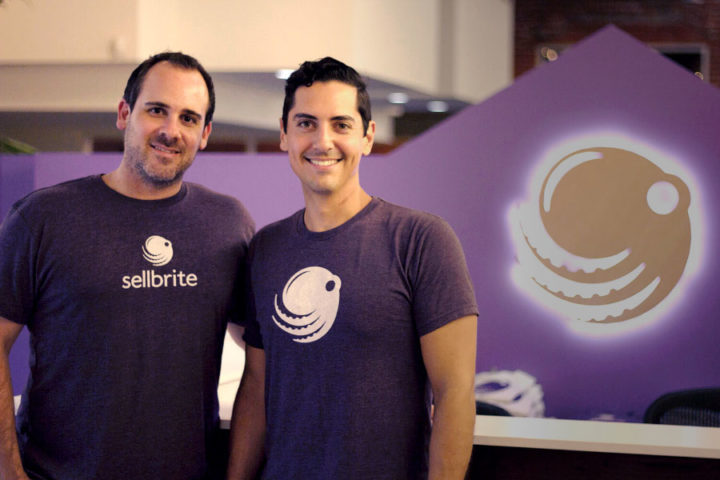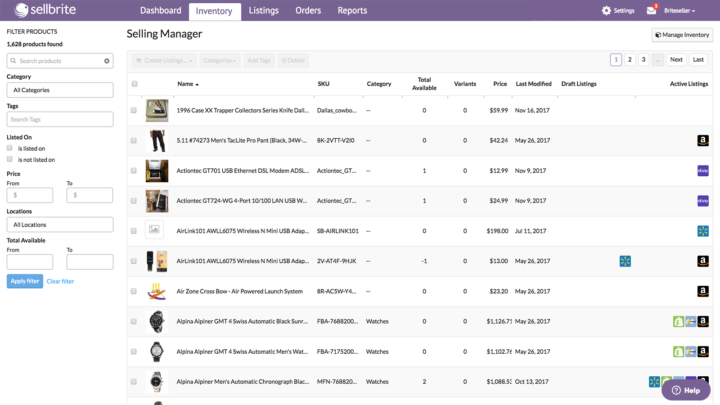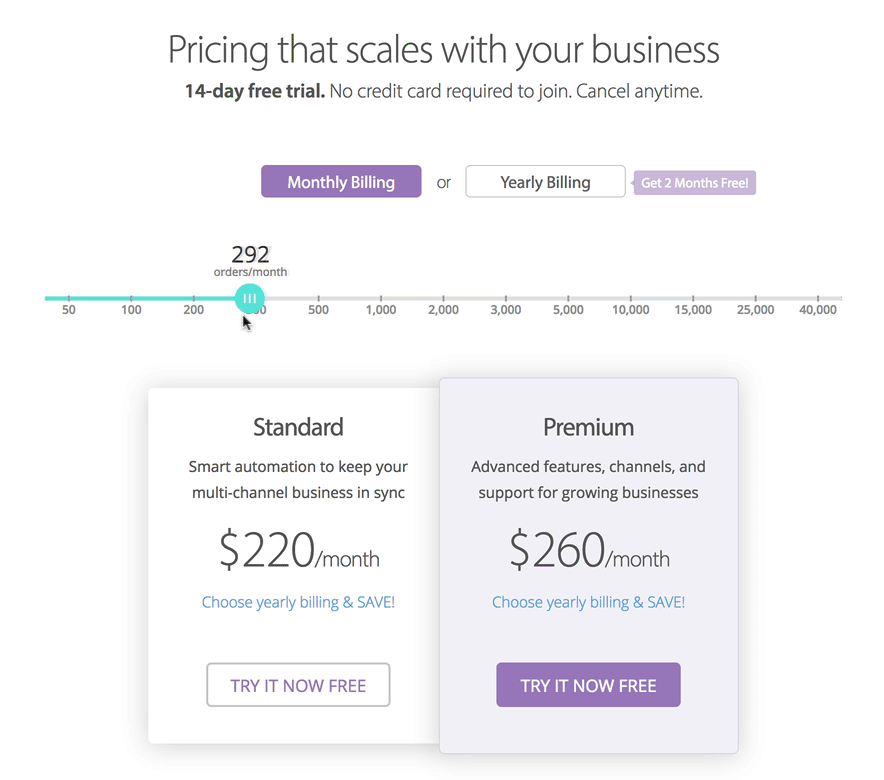The perpetual pricing dilemma
Designing and defining the pricing for your SaaS product may be one of the most difficult aspects of building a subscription business. “What should I charge?” is a tough question to answer, but that doesn’t cover even half of it… there are many similar questions on the road to defining subscription pricing, including:
- Should my pricing scale?
- By what metric should my pricing scale?
- How many plans should I offer?
- How do I cater for high-ASP businesses as well as low-ASP?
Introducing Sellbrite
Sellbrite is a SaaS platform for online retailers and brands looking to manage a multi-channel strategy — typically selling on their own branded web store, plus on one or more marketplaces like Amazon, eBay, Etsy etc.
The product helps simplify managing, building and growing that business strategy by tying together the inventory and orders into one interface, automating a lot of common tasks like syncing inventory between channels.
Like many founder stories, they got started because they were solving their own pain point. I sat down with CEO Brian Nolan to dig a little deeper.

Co-Founders Brian and Michael were working at a top online retailer at the time, Brian tells me, on a typically beautiful winter morning from the company’s HQ in the heart of Old Pasadena. The area is home to the original tech scene of Los Angeles, before everyone decided to move down to the beaches of Venice and Santa Monica.
Brian ran the multi-channel division of the retailer, and saw it grow from almost nothing to over $20M on external channels alone. But multi-channel at the time was incredibly hard to manage. Although there were some solutions available, none matched Brian’s criteria of being affordable, not asking for a percentage of revenue and using modern tech and design techniques.
Sellbrite was founded on a key belief: that selling across multiple channel would become critical to e-commerce success.
“At one point it was a nice-to-have — sell on Amazon and make a bit extra. Now it’s a requirement to have your products everywhere your customers are shopping… if you don’t have your products there, your competitors are going to have products there and will get the sale.”
The company started out under the experienced direction of Bill Gross’s Idealab, the longest-running tech incubator (since 1996!). Idealab played a huge part in tech growth in the Pasadena area over the years.
Price-value alignment is hard
“The SaaS model was obvious from the start, we knew we wanted to do that. What took a bit of time for us was to figure out the right pricing model.”
Initially, Sellbrite launched with five different plans that were primarily based on the number of products (or SKUs) that the retailer had, and the number of channels they were selling them on.
After some time, they shifted their focus up-market, where the more sophisticated, well-established customer existed. But the team found that their original pricing structure wasn’t going to be the best fit for this.
What the Sellbrite team were looking for here — and what many subscription businesses endlessly debate — is the pricing model that made the price point aligned to the success of the client’s business. This is the holy grail of pricing design and enables the “if you’re succeeding, we’re succeeding” kind of positive feedback loop that so many are striving for.

It was clear that scaling the pricing by number of SKUs wasn’t a great fit at all. They were seeing clients come to them with 1000s of SKUs, like apparel companies with multiple sizes, colors and other variations of each product line. For these clients, the product was expensive, which didn’t match with the low-margin, low-volume business they ran. On the flip side, they had clients with just 10 SKUs paying very little for the product, but killing it with over 50K orders per month! It just didn’t align.
“What we found is that the small businesses don’t like paying a percentage of revenue, which some of our competitors do. Even if they end up paying the same amount of money… If it’s a percentage of revenue, they feel like you’re taking money from them, versus them paying you for something they find value in.”

Enter ChartMogul
According to Brian, ChartMogul was an obvious choice for Sellbrite fairly early on in the company’s existence. It serves as the central point for measuring and understanding revenue as well as taking action on specific changes to the product or pricing. With ChartMogul, they track:
- Monthly recurring revenue (MRR)
- MRR movements, for tracking month-to-month changes
- Net MRR churn
- Customer churn rate
- Trial-to-paid conversion rate
- Cash flow
The team takes care to track every aspect of their revenue inside ChartMogul, as well as any one-time purchases available in the product:
“In addition to pure subscription [recurring] revenue, customers can buy shipping labels so we have a non-recurring cash flow here too, which is really nice.”
Analyzing pricing changes with ChartMogul
At the beginning of 2017, Sellbrite switched away from the per-SKU pricing model discussed above, to a new model that more closely reflects the value for clients. The new model scales based on order volume, so clients seeing a huge volume of orders will pay more for the service.

As many SaaS businesses find, the pursuit of a truly perfect price-value alignment is looking for something that just doesn’t exist — the best result is generally finding a model that’s the best possible fit for the product.
“It’s still not a perfect alignment necessarily — you could be selling expensive jewellery with high revenue, but shipping far fewer orders per month — but it’s more closely aligned with the success of the company.”
Because of this, the team are always looking to analyze and optimize pricing based on the data they have access to. In Sellbrite’s case, this is possible using segmentation in ChartMogul. Brian has set up segments for:
- Customers that were grandfathered in from the old pricing model
- Customers that are on the new pricing model
He compares these segments to track metrics like Churn rate, net MRR expansion and other aspects that indicate the effectiveness of their new pricing. Sellbrite is constantly testing their pricing to find the optimal fit for both the customers and the company, according to Brian, so expect to see updates in the future as they learn more from ChartMogul!
Take control of your SaaS pricing with ChartMogul
To understand how you can use ChartMogul to better measure, understand and grow your SaaS business, start your free trial at chartmogul.com or get in touch at sales@chartmogul.com.
Thanks to Brian and the team at Sellbrite for letting me drop by their inspiring headquarters!
